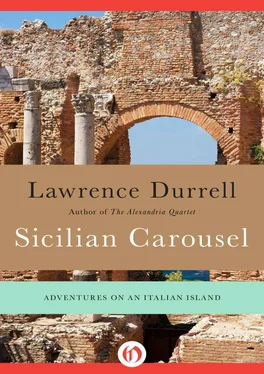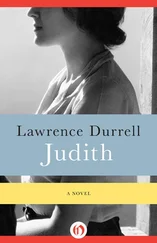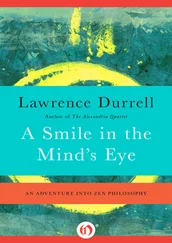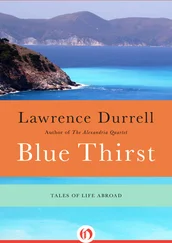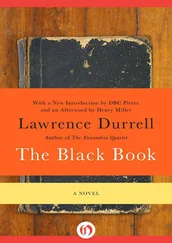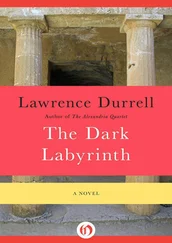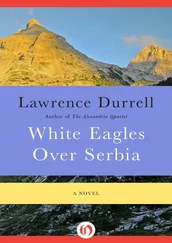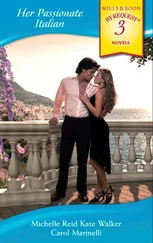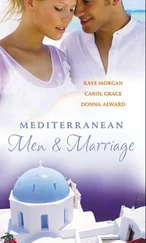In the circumstances, with the massive and blinding whiteness of the floodlights, the magical temple looking down upon us from some unimaginable height of centuries, the activity of the group of persons clustering about the stylobate, kneeling, bending, crawling, seemed to suggest that they were engaged in some strange archaic rite. Was it a propitiatory dance of some sort, an invocation to the God of the site? But no, the explanation was more prosaic. Yet before it was given to us the strangeness of the scene was increased by the fact that, as we approached upon the winding paths, punctuated by lanterns, we saw that they were Asiatics — Chinese I thought. Their faces were white in the white light, and their eyes had disappeared with the intensity of their concentration upon the ground. Our groups mingled for a moment to wander about on this extraordinary headland over the brimming darkness of the valley. Their guide was an acquaintance of Roberto’s and provided a clue as to the mysterious behavior of his group. Two of the more ardent photographers had lost their lens caps and everyone was trying to help them recover these valuable items. It was extremely hard. The floods were pouring up into the sky with such power that unless one was directly in their ray one could see nothing; one became a one-dimensional figure, a silhouette. They cast an absolutely definitive black shadow.
Even if you held out your hand in the light the underneath, the shadowy side, was plunged into total blackness. Thus to pick up something small from the ground just outside the arc of white light presented extraordinary difficulties. Which explained all the crouching stooping peering people. Standing off a little from them, feeling the velvety warmth of the night upon my cheek, I felt grateful to have outgrown the desire to photograph things; I had once been a keen photographer and had even sold my work. Now I preferred to try and use my eyes, at first hand, so to speak, and to make my memory do some work. In a little schoolchild’s exercise book I occasionally made a note or two for the pleasure of trying to draw; and then later I might embark on a watercolor which, by intention, would try to capture the mood or emotion of a particular place or incident. It was a more satisfactory way of going about things, more suitable to my present age and preoccupations. The photograph was always a slightly distorted version of the subject; whereas the painting made no pretensions to being anything more than a slightly distorted version of one’s feelings at a given moment in time.
Our Japanese couple seemed disposed to exchange a word with the Chinese, but the attempt made no headway and they retired into their shell once more, having pronounced the other group to be North Koreans. Some of us, with simulated good will, tried to join in the search for a moment, but it did not last long for we were now a little tired. Indeed we were glad to regain the bus, and after one more brilliant glimpse to coast quietly down the sloping roads towards the hotel where doubtless the others were already fast asleep. Fatigue lengthens distance mentally — we felt now as if we had been to the moon and back. And yet, despite it, a queer sense of elation and of freshness coexisted with the fatigue. The darkness was sort of translucent, the air absolutely warm and still; the hotel was rather a grand affair pitched at a main crossroads and obviously laid out for tourism. There was a huge swimming pool, and its lights were still on. A few people still lounged by it in deck chairs or swam; and so warm was it that several of our party, notably the German girl and her boy friend, elected to have a dip before going to bed. I hesitated but finally decided upon a whisky on the balcony before turning in; Deeds had retired sleepily, and I did not fancy the company of Beddoes who had doubtless been peering through keyholes already.
In the little file there were no letters actually written from Agrigento though she had had plenty to say about the place which she had visited on numerous occasions with her little car. “In early February it is pure wedding cake with the almond blossom of three tones and the fabulous later flowering of an occasional Judas. That is the real time to come, though of course it will be still too cold to swim.” I had missed it, but I already had the configurations of the Temple hills clearly in mind and could visualize easily how they must look — like a series of flowered panels, Chinese watercolors, with the mist-mauve sea behind. From my balcony I could sit in the warmth of the scented night and see the distant moth-soft dazzle of the temples crowning the lower slopes of Agrigento; immediately underneath me in loops of artificial light swam the fish-white bodies of northern bathers who as yet had not become nut brown with Sicilian sunlight. A slight splashing and the murmur of voices was rather agreeable from the second storey of this comfortable if nondescript building. I read for a little while, dipping here and there among the letters to recover references to the temples, and listening with half an ear to the voices in the pool.
Whole conversations at Bellapais in Cyprus came back to me when I visited the Temples at night — they have only just started to floodlight them, and the result is marvelous — the whole of nature takes part; every insect in creation, every moth and butterfly comes rushing to this great kermess of light, like people impelled to go to war, only to perish in the arcs. In the morning they are swabbed off with cloths. I picked up a most beautifully marked moth which looked as if it came from India specially to see Pythagoras or the other one — who is it? The one you find so great with his two-stroke universe, operating like a motorbike on the Love and Hate principle? O and yes, when I saw the ring of the temples, the so obviously defensive ring of them here on the outer slopes of the town I thought of your notions of ancient banking.
It was not simply banking, though we had canvassed pretty thoroughly the notion of the temple as a safe deposit of values, both sacred and profane. I had been trying to sort out some muddy notions about the idea of Beauty, and its origins in history and myth. You could not well take on a more intractable field to hoe — for we cannot even establish a working notion which defines excellence (“purity of function?” “congruence?”) let alone something as absolute as an aesthetic ideal of Beauty. Greece was an appropriate place to chew such an idea to death, since it was in Greece that all these unanswerable questions had first been ventilated. But riffling a large book of ancient Greek sites drawn and described for architects, I had been struck by the frequency with which the temple or the sacred fane had found its place, not in the interior of the city or fortress, but along its defensive walls. The temples with their magical properties were a more efficacious defense against piracy in a world of superstition than bolts and bars and moats even. And thinking over the theory of value as another mystery of our time (unless you accept the Freudian or Marxian notions which oppose each other) it seemed to me that in ancient times the whole notion of sacred and profane had not been separated; the riches of the temple were protective; and a site protected by the magic of its temples and its Gods would encourage investment in the form of artisanship — workers in metal and precious stones and furs. The numen would protect them and let them work in peace, while in their turn they would render the city rich and notable with their products. There was an underground connection between the Bank and the Temple and it has cropped up over and over again. In the Middle Ages the Order of Templars, themselves vowed to frugality and poverty, became the bankers of kings, and their temples the actual banks where treasure was deposited for safety.
Читать дальше
